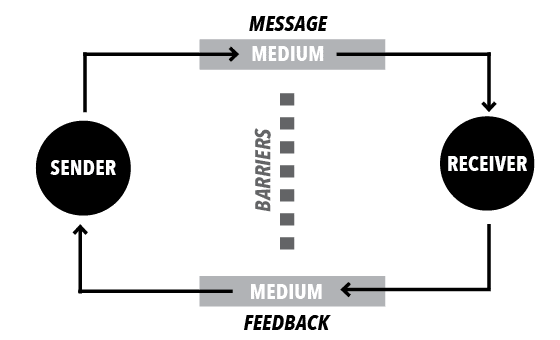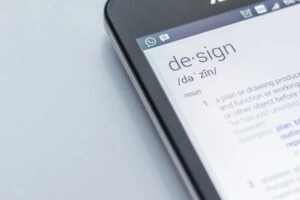Effectively Communicating Everything
Being intentional about communication is the key to clarity and success.
Good communication helps us clarify our vision, discover our current reality, and share truth more effectively. Effective communication includes the clarity of our message, intentional listening, and instant feedback to make sure that we’re saying what we think we’re saying.

Why is communication so important?
Communication is necessary in all circumstances and settings. To go from HERE to THERE requires excellent communication skills, since accurately describing our HERE, sharing our THERE, and describing the PATH we intend to travel with SMART goals requires communication. Communication binds the members of your team and these tools together.
The four parts of communication
1. The Sender: First the person communicating the message must know exactly what they want to say. Then, they have to choose a method of communication that will overcome existing barriers to communication.
2. The Receiver: The person receiving the sender’s message must humbly listen, so that they can understand the sender’s message as the sender intends it to be understood. Asking questions can help clarify the message.
3. The Medium: When the sender has figured out exactly what he wants to communicate, they will intentionally choose the method with which they will communicate. When they select their medium, the sender ought to consider what method will give their message the best possible chance to be understood as it is intended.
Examples: in-person, text, telephone, Zoom, email, newspapers, television, photography, etc.
4. The Barriers: The sender must understand that some things can block the effective flow of communication. If the sender understands these barriers, they are easier to overcome, and communication can proceed more easily.
Examples: Age, physical presence, distance, implicit bias, culture, language, sex, position, etc.
The formula for listening
Listening is the most challenging part of communication. To listen well, we can do these three things:
1. Practice humility: We have to recognize that communication is not about me. Instead, communication is a mutual effort to achieve our mission.
2. Practice focus: Instead of thinking about what we’re going to say next, we should listen to the person who is speaking. Even though silence can be awkward, it’s okay to take a second to formulate your thoughts after the other person has finished speaking.
3. Practice curiosity: When we ask questions, we can more clearly understand the perspective of the sender.
Two tools to grow in your listening skills
These two tools can help you grow to be a better listener:
1. Active listening: The receiver repeats back to the sender what they understand from the message to ensure they are on the same page. If it turns out they are not, this gives the sender the opportunity to further clarify the message. Example: “What I hear you saying is…”
2. Observational Listening: The receiver makes a mental movie in his mind to picture what the sender sees and is trying to share. The key to listening is to see what they see. We need to ask clarifying questions to make a clearer picture and help us see from the sender’s perspective.


